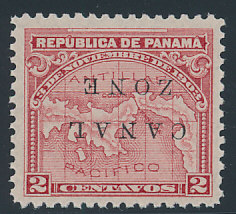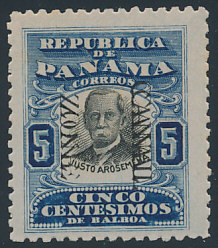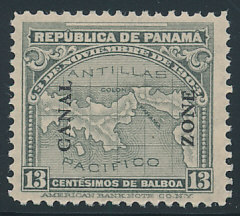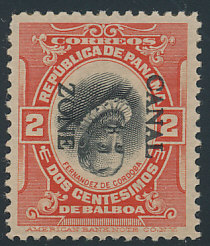Each generation tends to look proudly at its technological achievements and undervalue the achievements of the past. That we are rightly proud of our computers and rockets should not make us overlook just what an achievement the Panama Canal was.  This Isthmus of Panama is a narrow band of mountainous terrain less than fifty miles wide. Even since the Spanish began exploiting the riches of Peru in the early sixteenth century, politicians, businessmen, and engineers had dreamed of creating a canal to allow ships from the western Americas to trade with Europe and the eastern Americas without the thousands miles trip around the southern tip of South America. There were several failed early attempts to build a canal, the most famous being the French effort in the late nineteenth century. But it wasn’t until 1914 that the Americans completed the canal, after ten years of arduous effort and the cost (including earlier canal building efforts of tens of thousands of lives).
This Isthmus of Panama is a narrow band of mountainous terrain less than fifty miles wide. Even since the Spanish began exploiting the riches of Peru in the early sixteenth century, politicians, businessmen, and engineers had dreamed of creating a canal to allow ships from the western Americas to trade with Europe and the eastern Americas without the thousands miles trip around the southern tip of South America. There were several failed early attempts to build a canal, the most famous being the French effort in the late nineteenth century. But it wasn’t until 1914 that the Americans completed the canal, after ten years of arduous effort and the cost (including earlier canal building efforts of tens of thousands of lives).
The economic impact of the canal was immediate and profound. Weeks of shipping time and millions in shipping costs were immediately slashed from all trade to and from the western part of the Americas. The canal was a huge military boon as well (and the military benefits were one of the main reasons that the US built the canal. Similar to the interstate highway system, which the Department of Defense supported in the 1950’s, the canal linked the east and west coast of the US for defensive as well as purposes of trade.  Indeed, the acquisition of the Danish West Indies (St. Thomas) was to protect access to the canal from potential foes). And the canal has been a huge success. Nearly fifteen thousand ships use it each year.
Indeed, the acquisition of the Danish West Indies (St. Thomas) was to protect access to the canal from potential foes). And the canal has been a huge success. Nearly fifteen thousand ships use it each year.
Given its cost in both treasure and lives, and its economic and military importance, the United States had every interest in protection of the canal. As part of the plans to build it, land was ceded by the Columbian government to the United States and a small protectorate was established a few miles on either side of the canal.  This area was populated by members of the US military and the family and workers who tended the canal’s functions. Naturally they had their own postage stamps.
This area was populated by members of the US military and the family and workers who tended the canal’s functions. Naturally they had their own postage stamps.
There are three main stamp types of the Canal Zone—overprints on Columbian and Panamanian stamps, overprints on US issues, and stamp issues for Canal Zone that were designed and printed from scratch. The first stamp issues are Columbian stamps with hand stamped “Canal Zone” overprints. These are rare and have often been forged, so they should only be purchased from a reputable source. Later issues were on a combination of Panama and US issues. Many of the stamps are rare enough, but because so many issues were overprinted, many overprint varieties exist.
The stamps of the Canal Zone make a wonderful specialty area for two reasons.  First, there is a limited number of issues, and they aren’t issuing Canal Zone stamps any more. Several of the major stamps sell for hundreds of dollars or more, but for the most part, the stamps are affordable, and the entire country can be had (as major Scott numbers alone) for several thousand dollars or less—within the lifetime budget of most philatelists. The stamps are difficult to find, so it is not just a matter of throwing money at an established supply to loosen a few items for your collection. To complete the stamps of the Canal Zone, a collector will have to look hard before he buys—and the search is one of the more compelling aspects of our hobby.
First, there is a limited number of issues, and they aren’t issuing Canal Zone stamps any more. Several of the major stamps sell for hundreds of dollars or more, but for the most part, the stamps are affordable, and the entire country can be had (as major Scott numbers alone) for several thousand dollars or less—within the lifetime budget of most philatelists. The stamps are difficult to find, so it is not just a matter of throwing money at an established supply to loosen a few items for your collection. To complete the stamps of the Canal Zone, a collector will have to look hard before he buys—and the search is one of the more compelling aspects of our hobby.
And second, there are hundreds of Scott listed varieties on the stamps of Canal Zone, making this one of the more interesting countries to collect. Many varieties exist in quantities of fifty or less and still sell in the low hundreds of dollars.
